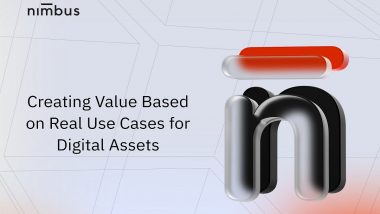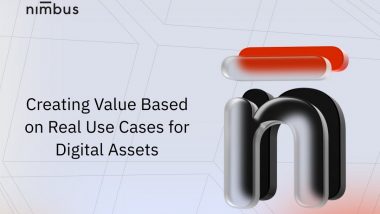The global economic area needs reliable standards, especially regarding unique company identification. The Legal Entity Identifier (LEI) is one such standard: a 20-digit code that makes organizations as unique worldwide as fingerprints. Find out below how the is changing international business relationships and ensuring greater transparency in global finance.
Historical context
The global financial crisis of 2008 exposed a fundamental flaw in the international economic system. Effective risk management was virtually impossible without a reliable identification of market participants. Financial institutions and supervisory authorities were faced with the challenge of tracing business relationships and dependencies in a complex network of international interdependencies. In response to this problem, the G20 developed the Legal Entity Identifier, or LEI for short. This standard permanently changes the financial sector and sets new standards for transparency and efficiency in almost all industries.
What is a Legal Entity Identifier?
The Legal Entity Identifier is a high-performance system for the unique identification of companies and other legal entities on a global level. With its standardized 20-digit structure, which is based on the ISO 17442 standard, each LEI code contains precise information about the respective company and, at the same time, enables automated processing in a wide variety of systems. This combination of information content and technical efficiency makes the Legal Entity Identifier a masterpiece in the history of international business relations. The sophisticated structure of the LEI code is particularly remarkable:
- The first four characters identify the Local Operating Unit (LOU) issuing organization.
- The following fourteen characters form a unique company code and act as a unique identifier.
- The last two characters serve as check digits and ensure data integrity.
This systematic structure ensures each code's global uniqueness and enables error-free electronic processing. The central administration by the Global Legal Entity Identifier Foundation (GLEIF) plays a key role in the system's reliability. As the central coordinating body, GLEIF monitors the quality of the LEIs issued and ensures that strict international standards are adhered to. By working closely with accredited issuers worldwide, GLEIF ensures that all LEI data is up-to-date and accurate.
Who needs a Legal Entity Identifier?
The question of the LEI requirement is essential for many companies, as the requirements can vary greatly depending on the industry and business activity. In the financial sector, however, the situation is regulated. Since the introduction of the MiFID II Directive (Markets in Financial Instruments Directive), all companies that conduct securities transactions on the European financial market must have a valid LEI. This obligation applies not only to banks and investment companies but also to insurance companies, pension funds, and other institutional investors who are regularly active in the financial markets. In particular, it should be emphasized that the LEI requirement also applies to smaller financial market participants and that no exceptions based on company size are provided. The consistent implementation of this requirement has led to a significant improvement in market transparency and better risk monitoring in the European financial sector in recent years.
However, the LEI's importance extends far beyond the financial sector. Companies from other industries that maintain international trade relations or conduct cross-border transactions also increasingly rely on an LEI. This is particularly true for organizations that participate in international derivatives trading or regularly submit tenders for public contracts in the EU. The requirements extend across various legal forms (stock corporations and partnerships, sole proprietorships, limited liability companies).
Particular attention is paid to regulatory reporting obligations, which often require an LEI. Companies that are subject to the EMIR (European Market Infrastructure Regulation), for example, must report their derivatives transactions to central trade repositories, stating their LEI. Similar requirements apply to reporting under the Transparency Directive or as part of the Common Reporting Standard (CRS) for the automatic exchange of information in tax matters. Integrating the Legal Entity Identifier into these various reporting systems has significantly simplified reporting processes and enables more efficient monitoring of business activities across national borders. The LEI has proven to be a valuable tool, particularly in money laundering prevention and the fight against financial crime, as it enables business partners to be identified quickly and reliably.
Strategic advantages through voluntary registration
Even companies that are not currently directly affected by the LEI requirement can register voluntarily in order to benefit from the numerous advantages. Many organizations, therefore, proactively decide to apply for an LEI in order to strengthen their international competitiveness and prepare for future requirements. Experience worldwide has shown that companies that implement an LEI at an early stage benefit from optimize business processes. In addition, the Legal Entity Identifier facilitates integration into international supply chains and digital trading platforms, which is of great importance for growth-oriented companies.
The path to your own Legal Entity Identifier
Companies can apply for their LEI from one of numerous accredited issuing offices in Germany. These issuing organizations undergo a strict accreditation process by the GLEIF (Global Legal Entity Identifier Foundation), thus guaranteeing uniform quality standards for LEI issuance. Companies are free to choose the issuing organization. For example, a German company can apply for LEI from an American or Asian LOU. The application process itself is primarily digitalized and requires the provision of specific company data. The necessary documents include
- basic company data such as name, legal form and registration number
- Information on the ownership structure
- direct and ultimate parent companies
This comprehensive data collection creates maximum transparency and enables the respective company's unique identification in the global economic area. The information submitted must be up-to-date and correct, as it has to be checked annually and updated if necessary. The issuing authorities have implemented strict validation processes that ensure the quality and reliability of the LEI data and thus strengthen trust in the entire system.
Costs and Validity for a Legal Entity Identifier
The costs for a Legal Entity Identifier are comprised of various components and can vary depending on the chosen issuing authority. In principle, there is a one-off registration fee and annual renewal fees. These fees not only cover the administrative costs of the issuers, but also contribute to the financing of the GLEIF and thus to the further development of the entire LEI system. The costs typically range from EUR 70 to 200 for the initial registration and EUR 40 to 100 for the annual renewal. Many companies consider this investment relatively small compared to the operational benefits and increased transparency offered by an LEI. In addition, some issuers have developed discount models for larger companies or organizations that apply for multiple LEIs simultaneously.
The validity period of an LEI is initially one year and must be renewed regularly thereafter. This annual renewal process updates the stored company data and ensures that the LEI system always contains up-to-date and reliable information. The renewal process is much more straightforward than the initial registration, as only changes to the company data need to be reported. This process is particularly efficient for companies that do not have to report any significant changes - in this case, confirmation of the existing data is usually sufficient. Many awarding bodies also offer automatic reminder systems and simplified online processes for the annual renewal, which further reduces the administrative burden for companies.
Practical benefits and advantages
At the top of the long list of benefits is the increased transparency in business relationships, which is achieved through the clear and standardized identification of all parties involved. This transparency enables a better assessment of potential business partners and reduces the risk of confusion or misclassification in transactions. Especially in complex supply chains or international business relationships, the LEI has proven to be an indispensable tool for creating trust and security. Companies can quickly and reliably check who they are doing business with and how the ownership structures are structured.
The Legal Entity Identifier unfolds its full potential, particularly in digitalization and process automation. The standardized 20-digit structure enables seamless integration into existing IT systems and considerably simplifies the automated processing of business transactions. This is evident in electronic data exchange, where the can be used as a reliable identifier in various systems and formats. Companies that have integrated the LEI into their digital processes report significant increases in efficiency across multiple business areas, such as the creation of reports or the management of business relationships.
Conclusion
What began as a response to the financial crisis of 2008 has established itself as an essential component of international business relations in recent years. Today, the Legal Entity Identifier shapes the global economy as a universal standard and has created a range of new opportunities for secure business relationships over its existence.
(All articles published here are Syndicated/Partnered/Sponsored feed, LatestLY Staff may not have modified or edited the content body. The views and facts appearing in the articles do not reflect the opinions of LatestLY, also LatestLY does not assume any responsibility or liability for the same.)













 Quickly
Quickly

















